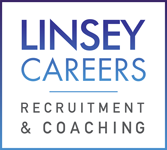
My first thought is how interesting it is that people think LinkedIn is only for people in job search.
Of course it’s the go-to resource for job seekers, recruiters and hiring leaders. But platforms grow and change depending on how people use them, and LinkedIn has evolved into a premier professional social media channel, connecting an amazing global community. If you’re only using it for job search, you’re missing out on a big opportunity to nurture your network.
Separate from my recruiting work, I know I stay in touch with former colleagues that I would have otherwise lost with time and distance. I have visibility into the great work people in my field are doing. I get to celebrate their job wins and promotions and I can offer support for professional challenges.
When I attend a conference, I look up the speaker on LinkedIn. When I get new clients, I look at their profile before having a conversation. I recently found a neighbor from years ago and wondered what ever happened to her. She has had a tremendous career and is living in a nearby town. I was thrilled to have the opportunity to reconnect.
My point in all of this is that LinkedIn is so much more than a resource for job seekers and hiring leaders alike. And because of that, it is important to keep your profile up to date. You never know what networking contacts may reach out and where it will lead.
If you haven’t dusted off your LinkedIn profile in a while, it’s time for a refresh. Here are some tips based on what I look for as a recruiter and a career coach.
Start at the Top
How old is your photo? If it’s more than 3-4 years old, it’s time for an update. A good headshot is best – face lit, personality shining through. It doesn’t have to be taken by a professional, but you want it to make a good first impression. Add the cover shot that fits behind your headshot. That one should be something that enhances your profile in some way. The sizing can be tricky. Make sure it’s not blurry or pixelated, and make sure it looks good on desktop and mobile. (Follow LinkedIn’s sizing guidance.)
Use a Descriptive Headline
The headline is prime real estate. Use it to tell me who you are professionally, not your title. I can see that when I scroll down a little. There are many articles about how to write a great LinkedIn headline. It’s worth putting a little thought into it. LinkedIn might push you to update your headline with your title, but in this case, ignore it.
Make the “About” Section About You
I love this section. It’s your opportunity to tell me who you are and what you do – and to show me you actually enjoy doing it. I’m a big believer that if you sound like you love what you do, you are probably pretty good at it. You don’t need a novel here, but give me more to go on than the standard pitch that could be interchanged with anyone else in your field. Are you a strategic thinker who drives results? So is everyone else. Make it about YOU. Oh, and write it in first person. After all, this is a social media channel. You’re telling the story of you.
Highlight Your Experience
You don’t need every bullet point that is on your resume. Give a couple of sentences that summarizes what you do (or did) in each role. When you can show scope of responsibility, it helps when recruiters are trying to figure out if you might be a match for their open position. If you’re in job search, your goal is to be found by people who want to hire someone with your experience. If you only have job titles and no explanation, recruiters and hiring managers won’t be enticed to reach out to learn more. Make it easy for them to understand who you are professionally.
Show Off Links and Projects
If you have good ones to share, definitely do it. This is especially true for creative types who may have a portfolio. Be sure to include your website or online portfolio that showcases your work.
There are a couple of places to do this. Use the “Featured” section to share posts, articles, websites and upload media. This can be a powerful and interesting visual tool for people to easily see what you can do. You can also link to and upload projects within the experience and education sections. This might be a good option for older projects that highlight your accomplishments in a specific role.
Stay Engaged
Updating your profile isn’t a set-it-and-forget-it kind of thing. You have to actually use LinkedIn to maximize its benefits. Think of it as a profile-forward platform. Scroll through your feed and engage with others. Post your own content. Then, when people check out who you are, your refreshed profile communicates what you want it to. In the language of branding, you can use your LinkedIn profile to elevate your professional profile.



